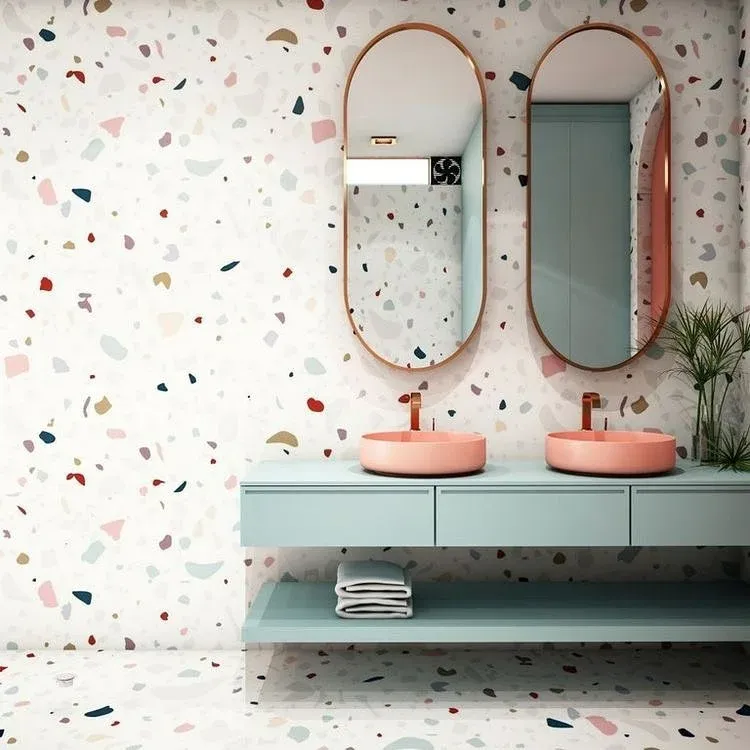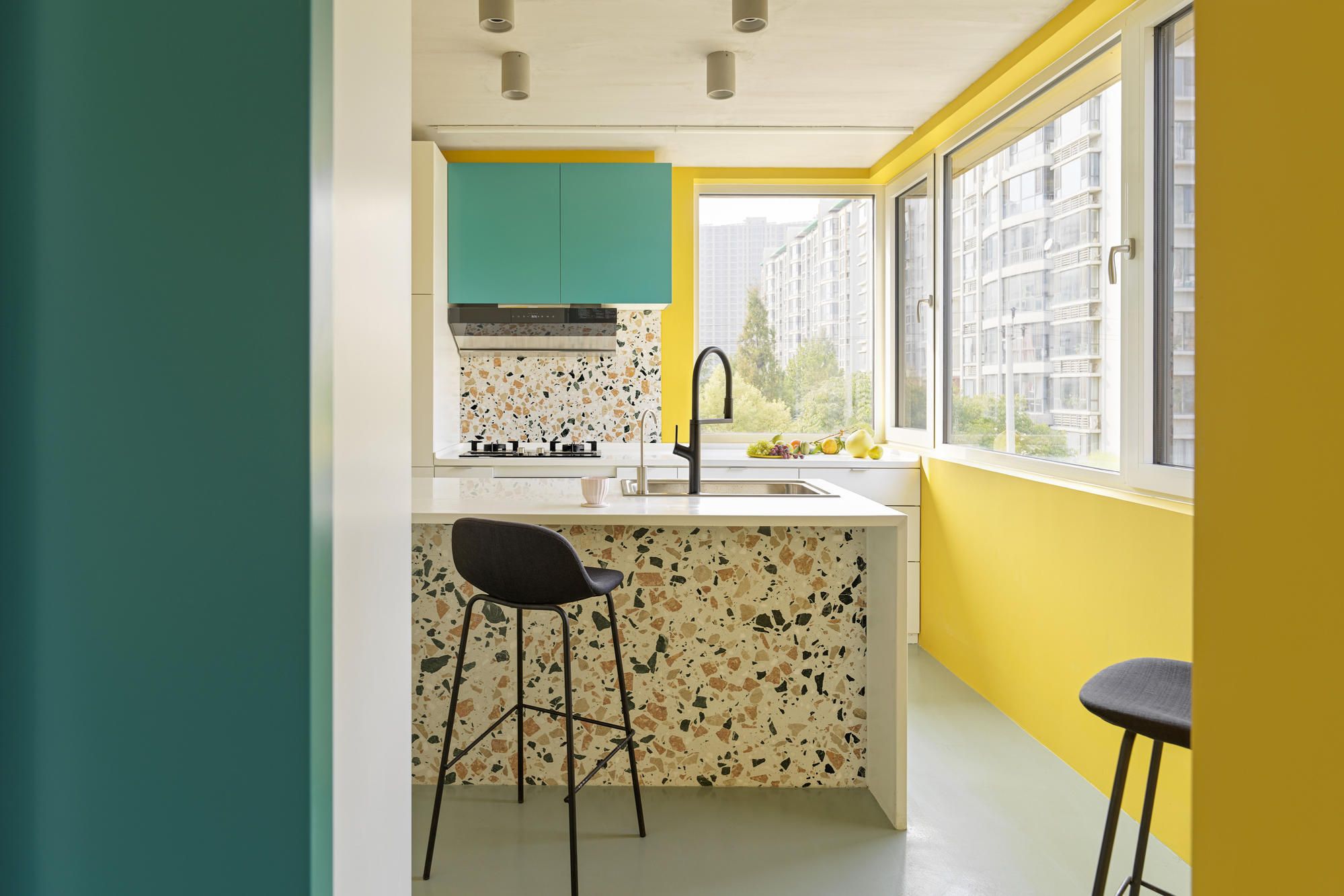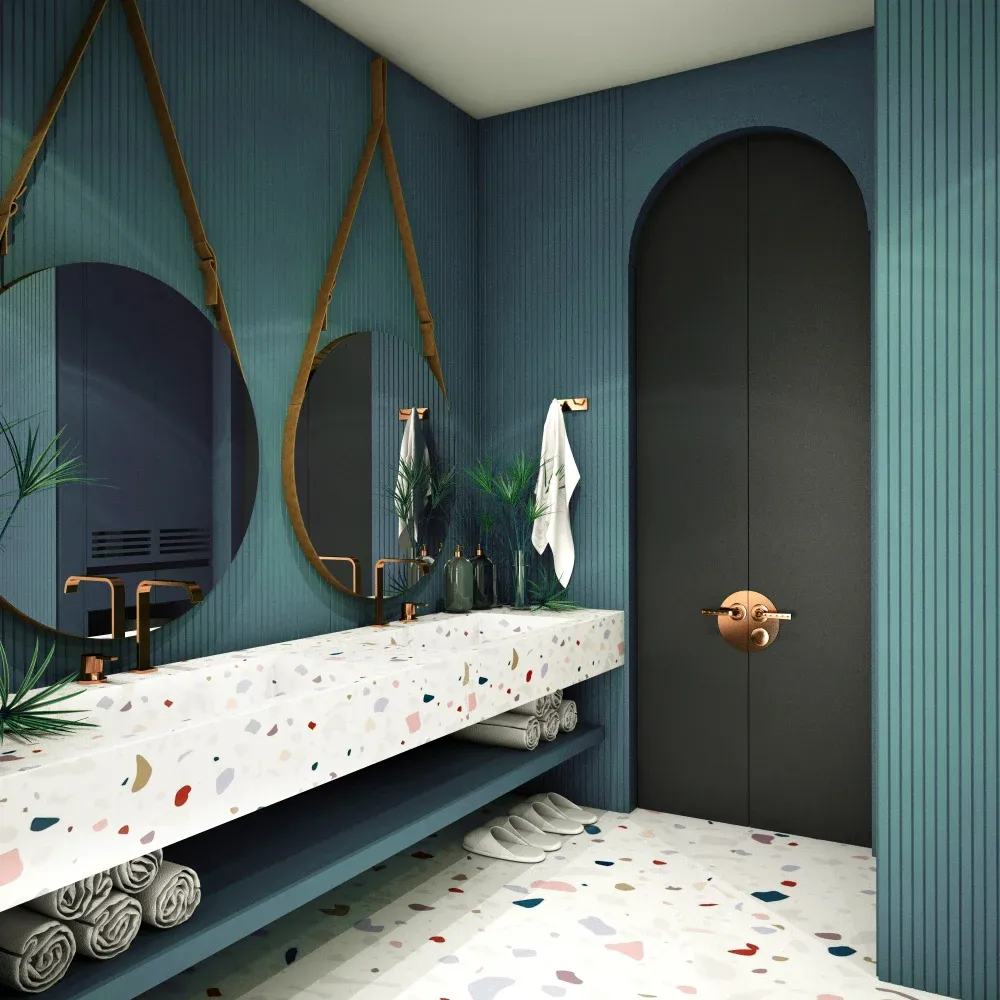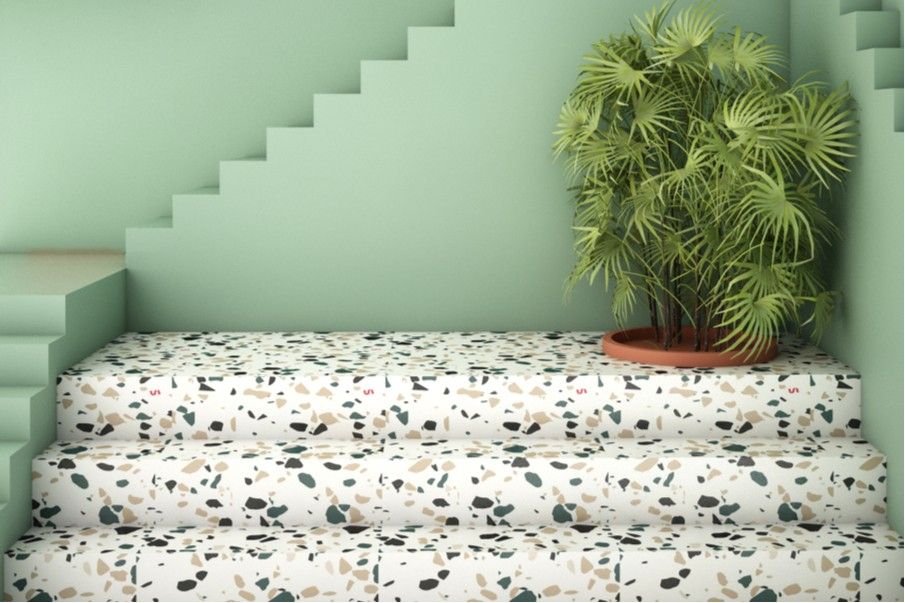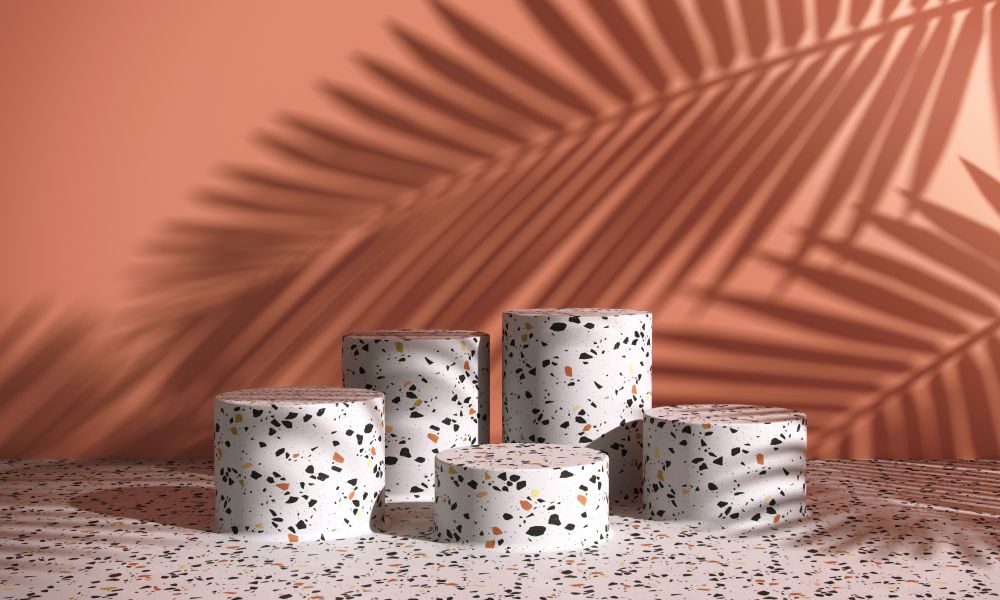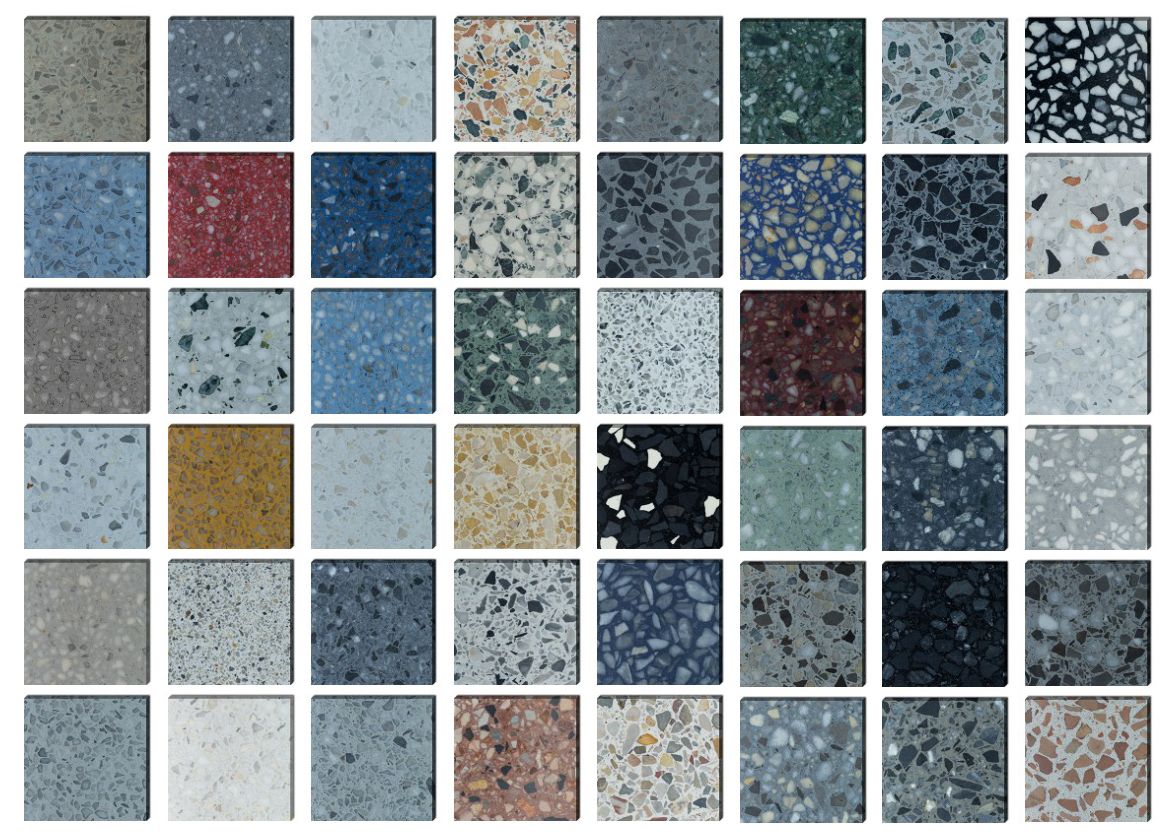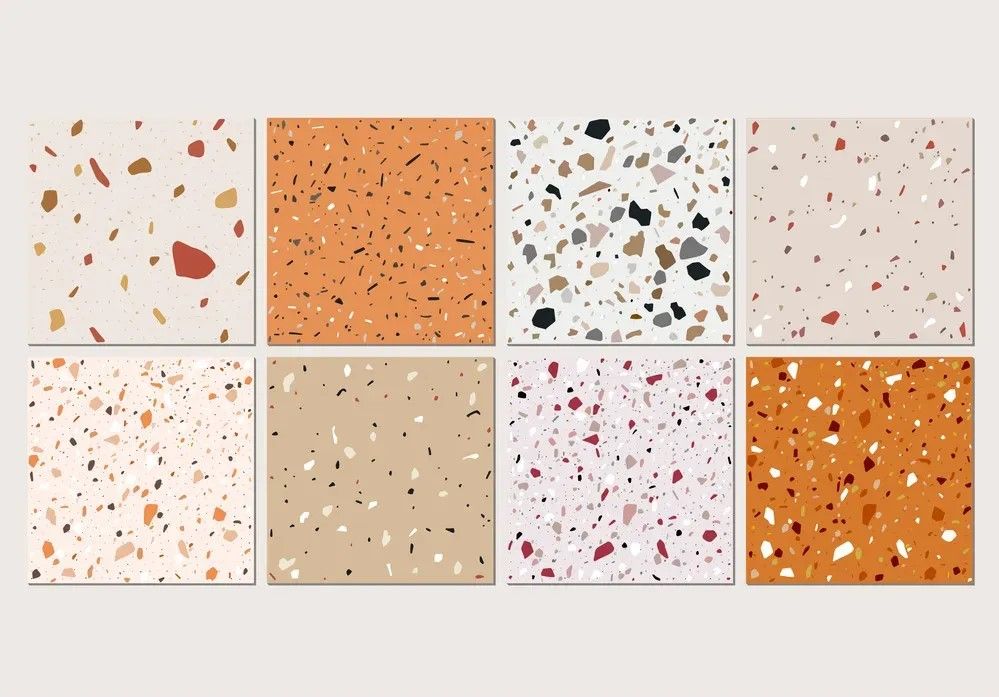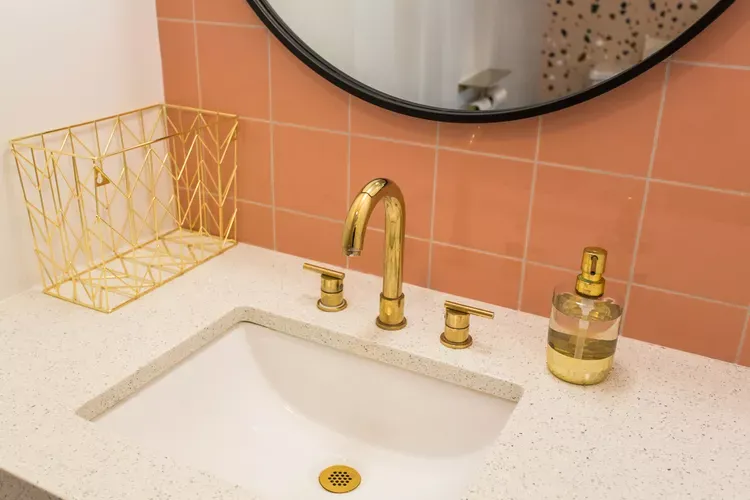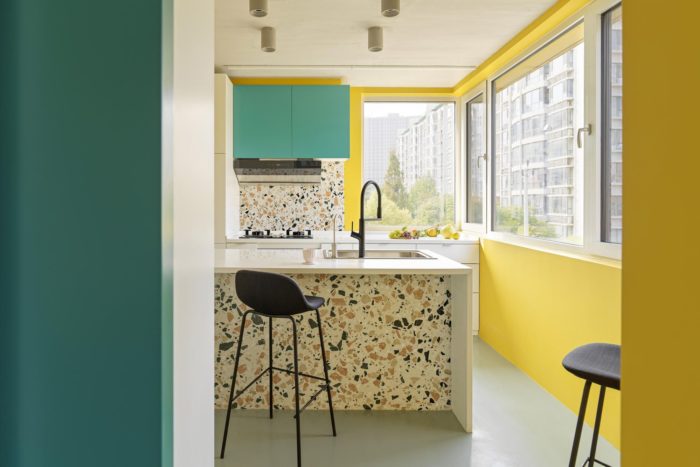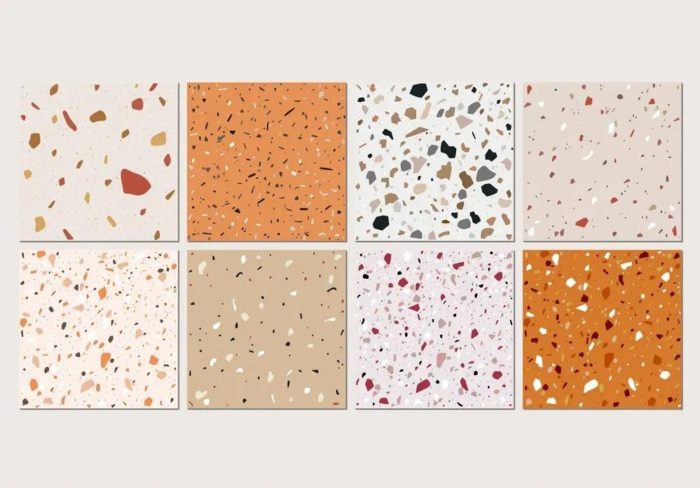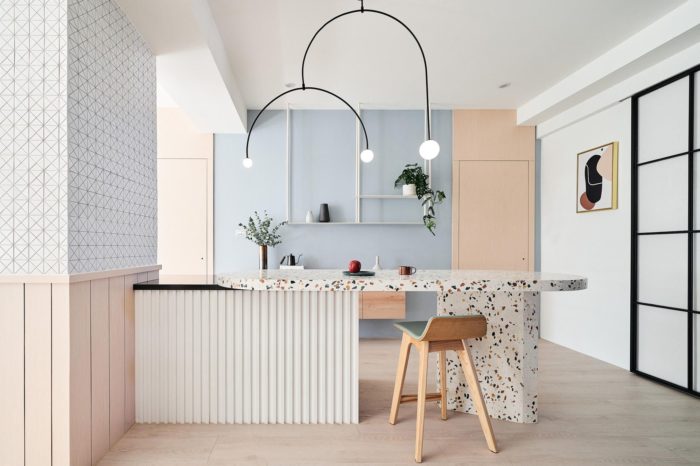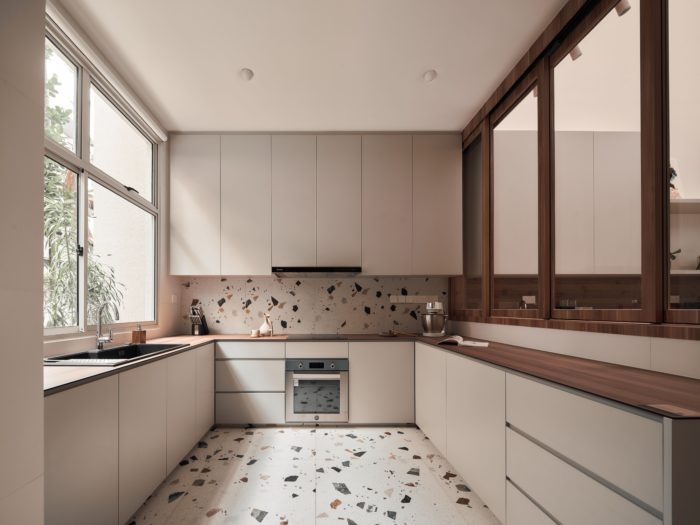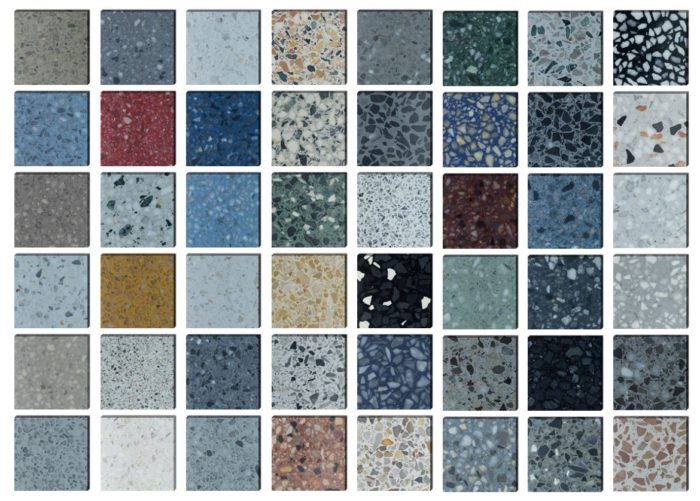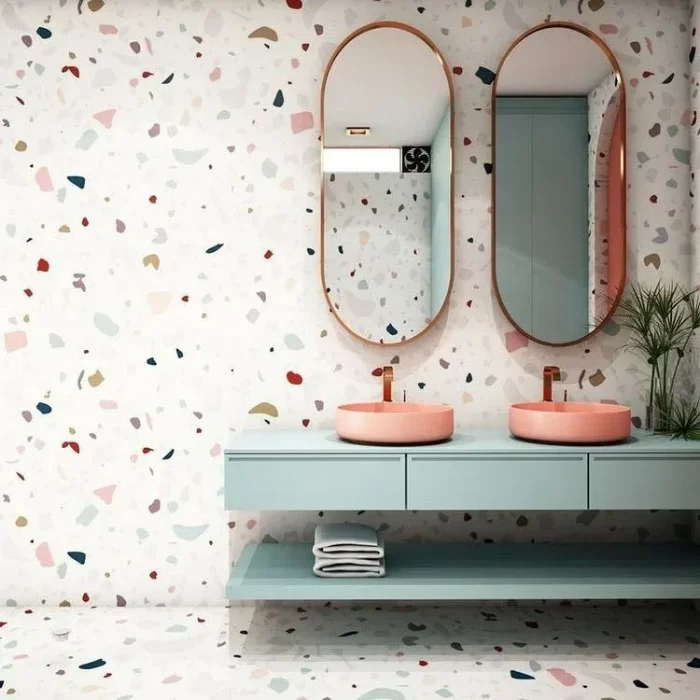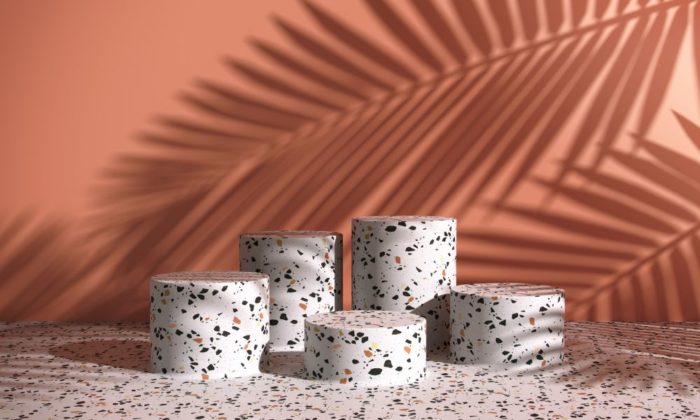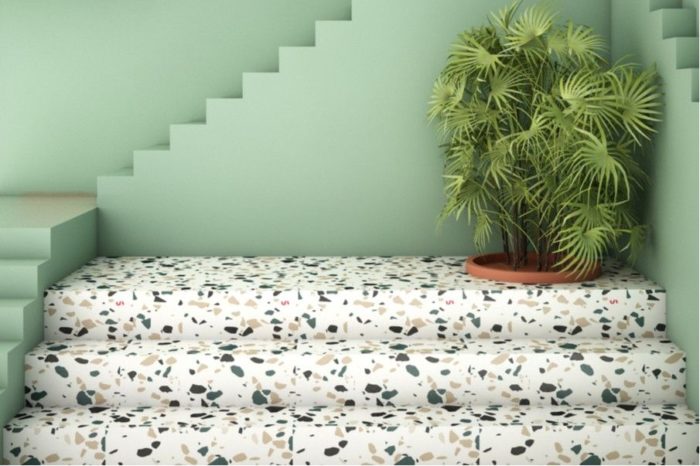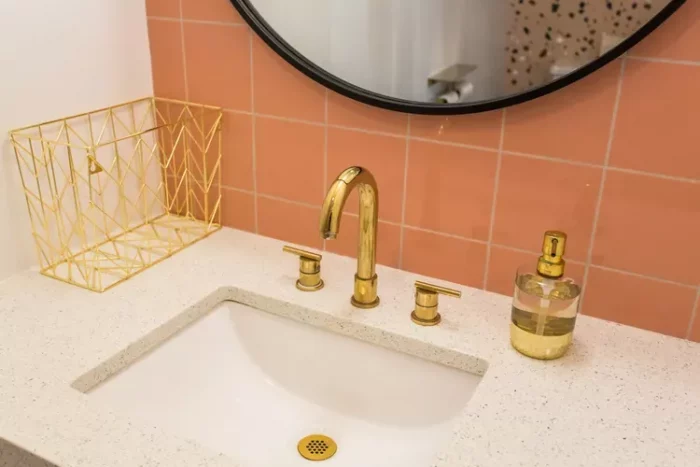Terrazzo Tile’s Back! , and it’s no surprise why. This versatile material seamlessly combines style, durability, and easy maintenance, making it an affordable option for anyone looking to enhance their living spaces. Whether you’re considering using terrazzo tiles for your kitchen countertops, a striking accent wall, or flooring, this article from Arch2O delves into why this unique material has become increasingly popular among homeowners.
1) What is Terrazzo Tile?
Terrazzo tile is a unique flooring and countertop material made by mixing marble chips, cement, and water. It is available in various colors and patterns that can create different vibes, from classic and elegant to modern and contemporary. This material is durable and requires low maintenance, which makes it perfect for high-traffic areas. Even better, it is eco-friendly and made from recycled materials. Terrazzo is a flooring material that originated in Italy during the Renaissance period. It was commonly used in public spaces such as churches and palaces, mainly because it was more affordable than marble floors. Terrazzo has recently regained popularity due to its durability, low maintenance, and unique appearance.
2) How are terrazzo tiles manufactured?
Terrazzo is a flooring material created by mixing marble chips, cement, and water. The mixture is then poured into a mold and left to set. Once dried, the terrazzo is polished to achieve a smooth texture. You can also add pigments to give it a variety of colors. In terms of aggregates, terrazzo can include marble, granite, quartz, and glass, making it a versatile option for different designs.
3) Pros And Cons Of Using Terrazzo Tile
Here are some of the pros of using terrazzo tile in interior design:
- Sturdy and Resilient: Terrazzo stands out for its durability, ability to handle heavy foot traffic, and ability to resist stains and scratches effectively.
- Easy Upkeep: It’s a low-maintenance material requiring minimal effort for cleaning—just a simple wipe with a damp cloth and mild soap does the trick.
- Colorful and Patterned Options: With a wide range of colors and patterns, you can easily find the ideal style to complement your home.
- Timeless Elegance: Terrazzo Tile brings a classic and elegant vibe, injecting a hint of luxury into any room.
- Modern Versatility: Beyond tradition, terrazzo is flexible enough to create a modern and contemporary aesthetic, fitting seamlessly into various styles.
- Eco-Friendly Choice: Terrazzo Tile gets extra points for sustainability, being crafted from recycled materials—an excellent option for those keen on environmentally friendly choices.
Here are some of the cons of using terrazzo tile in interior design:
- Expense: Terrazzo might be pricier than other options like ceramic tile or laminate flooring.
- Installation Challenge: Putting in terrazzo is trickier than other flooring types, so it’s crucial to bring in a skilled professional to ensure it’s done right.
- Repair Complexity: Fixing damaged terrazzo tile isn’t a walk in the park. Professional help is essential to guarantee a correct repair job.
- Ongoing Care: Terrazzo demands regular attention to stay in top shape. Periodic sealing is necessary to shield it from stains and scratches.
4) What Are The Most Common Types Of Terrazzo Tile?
- Polished Terrazzo: The most commonly used type of terrazzo is polished, giving it a sleek and luxurious finish. It is often applied in high-traffic areas like lobbies and hallways and in places that require easy cleaning, such as kitchens and bathrooms.
- Honed Terrazzo: On the other hand, honed terrazzo skips the high gloss but remains smooth with a matte finish. This type is favored in places with a more natural appearance and suits areas with less foot traffic, like bedrooms and living rooms.
- Sandblasted Terrazzo: Terrazzo undergoes a sandblasting process to create a textured surface that offers a range of looks, from subtle to striking. This type of terrazzo is often chosen when a unique appearance is desired, making it an excellent option for areas that require slip resistance, such as pool decks and patios.
- Stamped Terrazzo: Terrazzo flooring stamped with a pattern is a versatile option that can suit various styles, from classic to modern. It is a popular choice for spaces that need a decorative touch and is especially suitable for areas that require easy cleaning, such as kitchens and bathrooms.
Also read: Polished Concrete: When Beauty, Strength, and Simplicity Converge.
5) Is Terrazzo Tile Expensive?
Terrazzo tiles may be expensive, but they are a wise investment in durability and longevity. The cost of terrazzo tiles varies depending on factors such as the tile size, shape, type of aggregate, and design complexity. Compared to other tiles like ceramic or porcelain, terrazzo tiles tend to be pricier. However, considering their durability and with proper care, they prove to be a wise and long-lasting investment.
- The size and shape of the tiles: Tiles with a more complex design will be more expensive than smaller tiles with more superficial structures. Please note that there may be a variation in the prices of tiles based on their size and complexity.
- The type of aggregate used: Terrazzo tile can be created using a range of aggregates like marble, granite, quartz, and glass, with each type affecting the tile’s cost.
- The complexity of the design: Terrazzo tile can be made with various techniques, from simple patterns to intricate mosaics. The complexity of the structure will affect the cost of the tile.
- The installation costs: Terrazzo tile installation costs more than other tiles due to its difficulty.
6) Tips On How To Incorporate Terrazzo Tile In Your Home Interiors
- Terrazzo for Bathroom Countertops: Terrazzo Tile, made of marble or granite chips set in concrete, can be cast in place, meaning it can be poured directly onto a surface. This creates a seamless finish that fits nicely around edges and curves, offering a sleek look when the project is finished. The designers used terrazzo for the countertop and basin in a modern bathroom. They skillfully wrapped the material around the counter’s edge, allowing it to fold down into the sink. The result is a continuous surface that is not only stylish but also extremely easy to clean.
- Terrazzo Tile in Kitchens: The cast-in-situ technique can be applied to various areas in your kitchen, such as countertops, breakfast nooks, tabletops, and even kitchen backsplashes. Interestingly, you can use this method to cast the kitchen sink itself, creating a gorgeous, seamless surface.
- Decorative Items and Accent Pieces using Terrazzo: Designers are finding new and exciting ways to incorporate Terrazzo into their designs. From Scandinavian-inspired flower pots with a terrazzo twist to funky stools with speckled seats, Terrazzo is being used to create a variety of accent pieces. Its versatility makes the possibilities endless: think of decorative items such as terrazzo boxes, paperweights, lampshades, or even murals with Terrazzo in different colors and patterns. With Terrazzo, you can let your imagination run wild and create artful pieces that are both beautiful and unique.
- Terrazzo in Staircases and Flooring: Terrazzo is often used for flooring and staircases. You can achieve a modern and elegant look for stairs using poured concrete mixed with terrazzo chips. When it comes to flooring, you can either cast it in place or use terrazzo tiles for a more tiled appearance. There are many options available to achieve the desired look.
7) Is It Easy To Maintain?
To maintain the cleanliness of your terrazzo floor, using a basic steam mop or a nylon scrubbing brush will suffice. However, you should be aware that poured terrazzo is more prone to developing cracks than slabs. If cracks do appear, the solution involves getting a specialist to re-grind and re-polish the floor to restore it to its original condition.
8) Are Terrazzo Tile Waterproof?
Terrazzo tiles can be an excellent choice for damp areas such as bathrooms or laundry rooms because of their remarkable ability to resist water in the home. However, it’s essential to ensure that you regularly apply a high-quality tile sealer throughout the life of the tile to provide the best possible protection.
9) The Future of Terrazzo Tile
Terrazzo flooring, like any other trend, may experience a surge in popularity followed by a decline into obscurity, only to re-emerge later. However, no matter how popular or unpopular the trend may be, the floors are built to last. With their enduring durability and diverse design options, terrazzo floors are a wise investment that will stand the test of time.
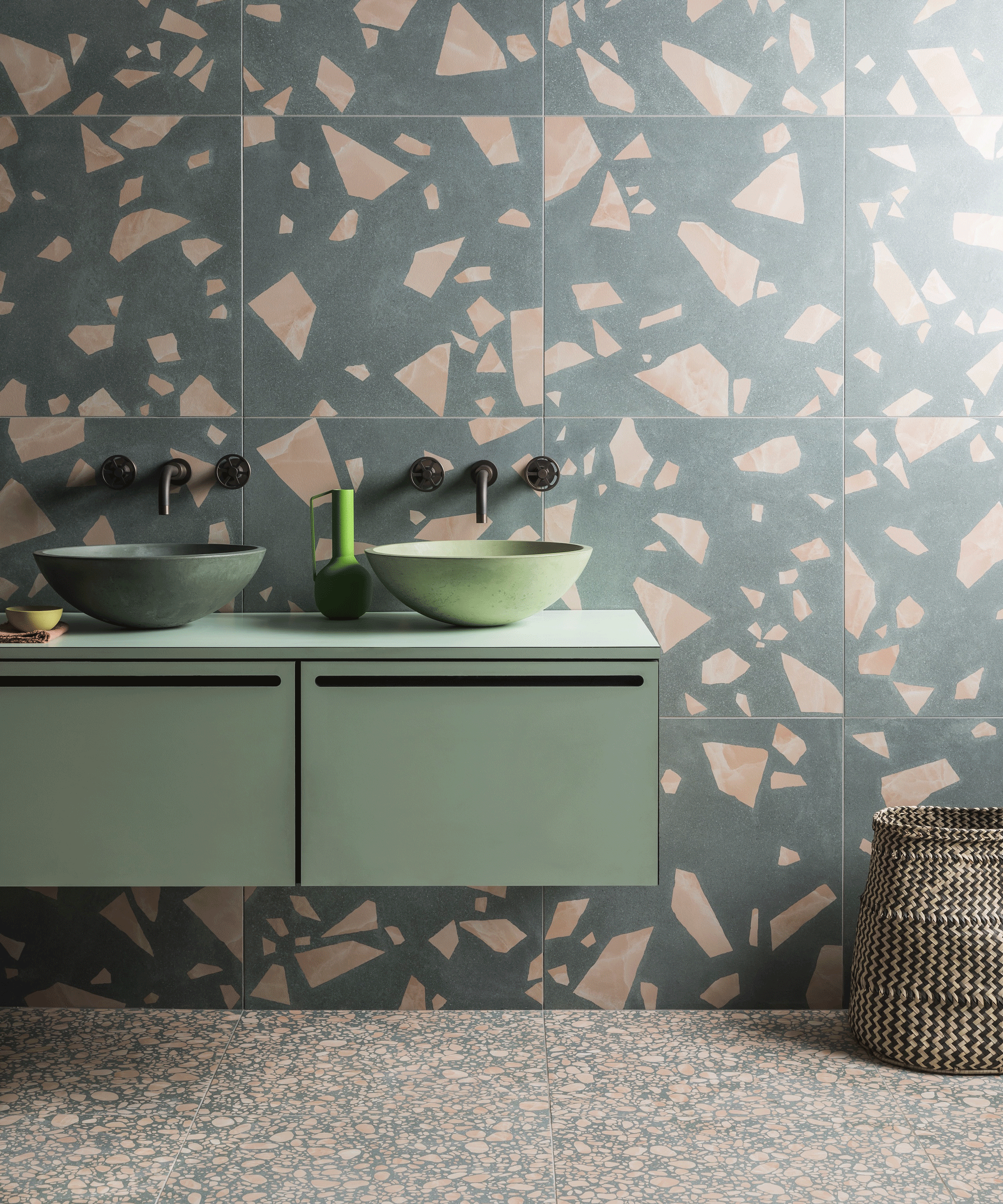
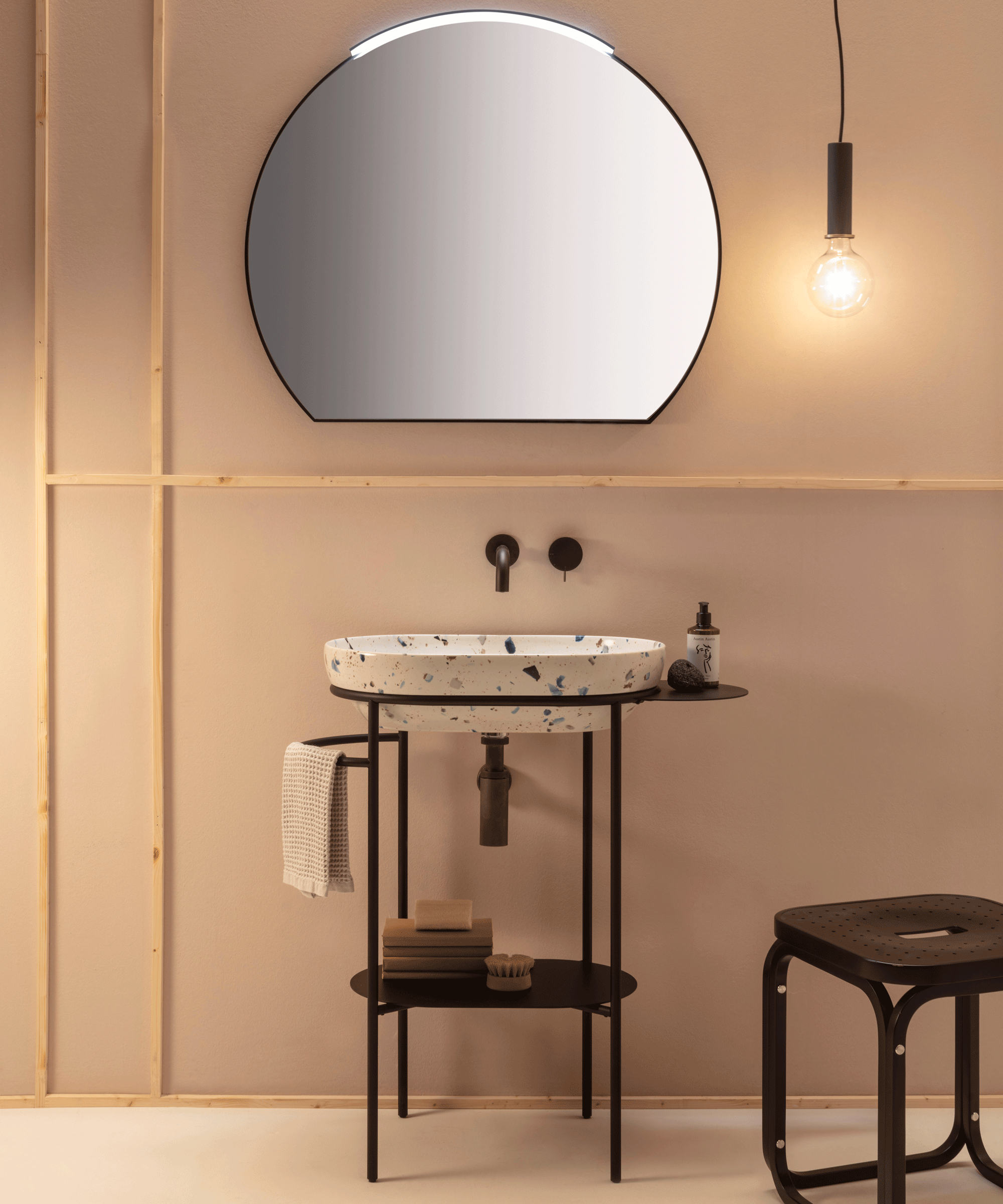
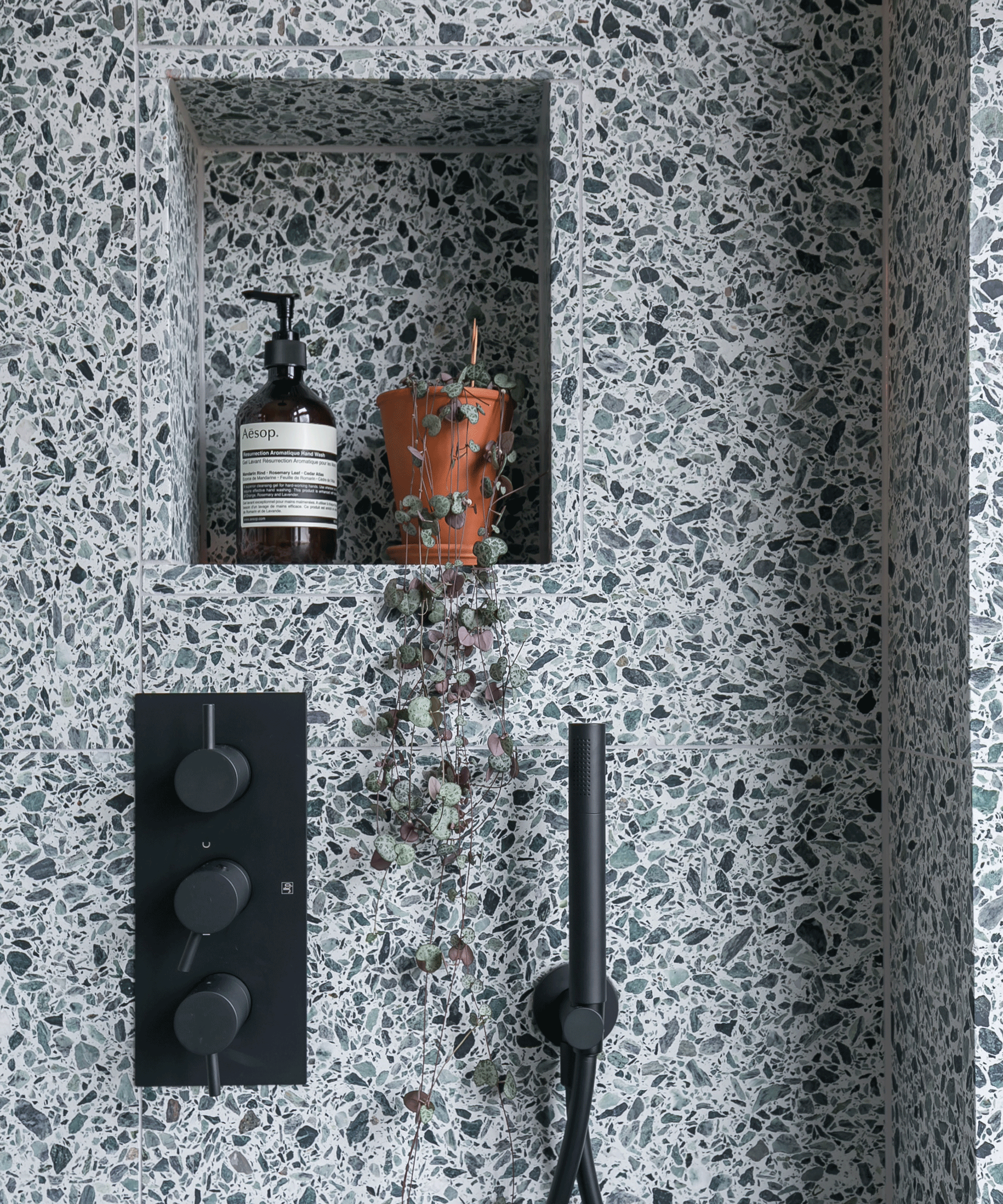
10) Conclusion
Terrazzo is a material that is resilient, easy to care for, and eco-friendly. It offers a wide range of color and pattern options, making it suitable for traditional and modern styles. However, it is essential to note that terrazzo tends to be more expensive than other flooring options. It is crucial to have a skilled contractor install it, and periodic sealing and resealing may be necessary to maintain its optimal condition over time.
